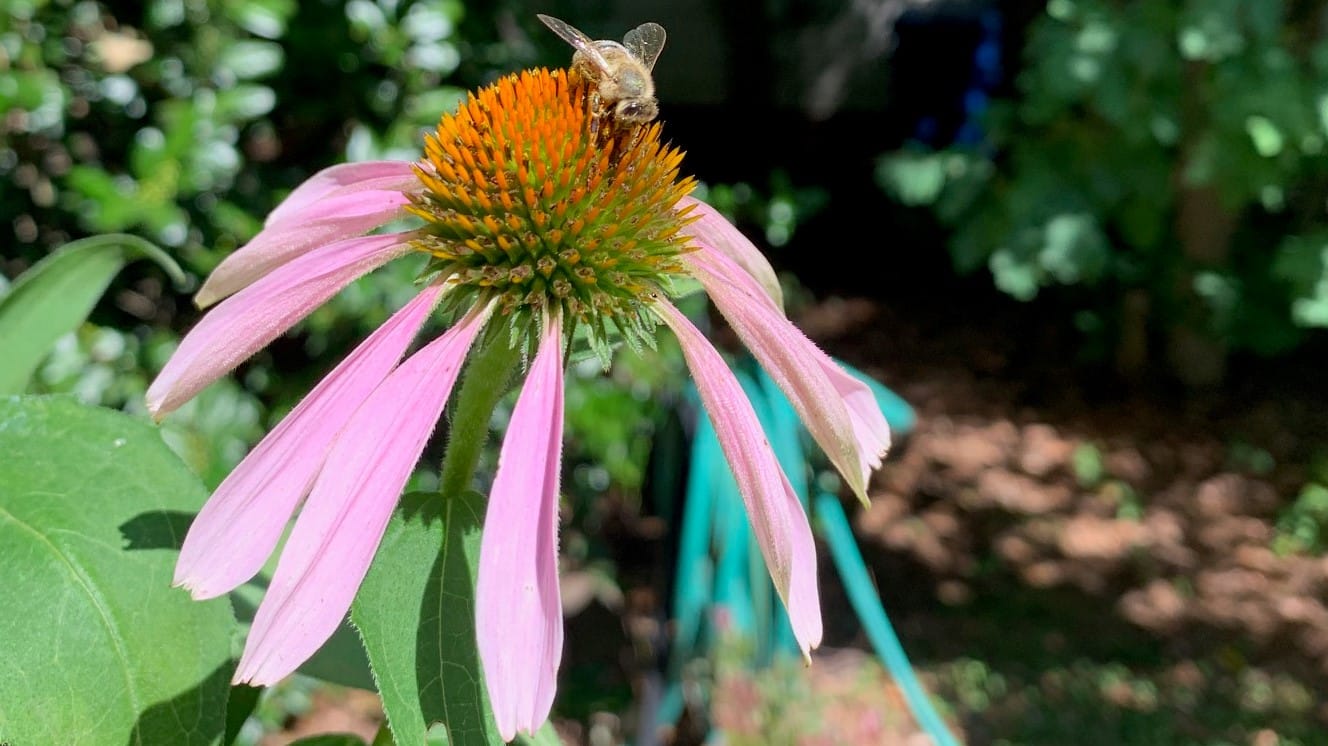Saving Bees, Butterflies – and Maybe Even Flies – Yard by Yard

Editor’s note: This blog post is part of a series of interviews with NC State University experts exploring whether homeowners in North Carolina could make a difference for pollinators through lawn and garden design, maintenance or planting.
The shape, color and even smell of the flowers that you plant determine the types of pollinators that come to your garden, according to an expert from North Carolina State University.
Danesha Seth Carley, associate professor of horticulture science at NC State and director of the Center for Integrated Pest Management, co-authored the book “Pollinator Gardening for the South” with Anne Spafford, who is also a professor of horticulture science at NC State.
The book details not only the importance of pollinators and threats facing them, but it also provides insights into the different kinds of flowers that benefit different types of pollinators, ranging from the popular ones, like bees and butterflies, to those with more of a reputation problem, like flies.
The Abstract spoke to Carley about planting wildflowers to support pollinators, and other ways homeowners can support bees, flies and butterflies in their own backyards.
The Abstract: In your book, you talk about how bees are not the only pollinators. What other pollinators are important and what types of backyard habitats support them?
Danesha Seth Carley: When you care for it in an efficient way, mowed grass does not promote biodiversity with bee populations, but it does not negatively impact butterfly or fly populations. Why do we care? Flies, which belong to the order known as “diptera,” are the second most efficient pollinators out in the world. While you don’t see bumper stickers that say “save the flies,” they are still important pollinators. However, if you were talking about bees, which is my area of specialty, most lawns do not promote habitat for bees. Wild strips of unmowed areas, or planted areas that have floral resources, are going to be good for bees.
TA: When it comes to planting flowers to support pollinators, is there a certain type of flower that works the best for them?
Carley: I wouldn’t recommend anybody go out and plant their yard with only one thing. Biodiversity is better. From an aesthetics point of view, humans like diversity, too. I find gardens bursting with layers of different kind of plants and colors to be incredibly beautiful. You also get a more diverse pollinator population as the diversity of plants in your garden increases.
If you think about flowers, they’re not all shaped the same. Some are open and disc-like, like coneflowers, some have trumpet-shaped flowers and some are bell-shaped. Pollinators have different preferences for different flower shapes. Some beetles – yes, they are also pollinators – prefer disc-shaped flowers. Some bees have long tongues, so they’re better at getting into those bell-shaped flowers. Some have short tongues, so they prefer easy-to-access flowers such as asters, sunflowers and daisies. We have more than 500 native bee species in North Carolina alone. Each of them, just like people, have their own preferences in terms of what they like to feed on. The more diversity we can bring into our gardens, the more diversity of pollinators we can bring in.
Some of my favorite flowers that grow readily around here are coneflowers, butterfly weed and asters. While they not native, many herbs, such as rosemary, thyme, and lavender are still very good for bees and a welcome addition to the home garden,.
TA: Why does color matter to pollinators?
Carley: Research has shown that bees actually prefer flowers in the purple-violet and blue range, so many flowers have evolved what scientists refer to as a “blue halo.” This blue halo is attractive to bees. That’s because bees have enhanced photoreceptors, which are light-sensitive cells in the eye, allowing them to better see the blue and ultraviolet parts of the light spectrum. Bees can also see yellow, but they can’t see red.
There isn’t much research on this, but flies are thought to have different preferred colors. A number of flowers pollinated by flies are yellowish-green, like some wild orchids, making us believe that flies prefer flowers in the yellow-green color spectrums. I also understand that a number of fly species are attracted primarily by smell. Corpse flowers and skunk cabbage, for example, are fly-pollinated.
TA: What’s your take on “No Mow May?”
Carley: I tell people they need to re-imagine their lawns. Instead of thinking about the dandelion, violet and henbit as weeds, and trying to eradicate or remove them, think of them as pollinator habitat, and welcome them. From those plants, bees are either getting one of two things: nectar, which is made of sugar, and gives them those carbohydrates they need to keep their energy up; or pollen, which is the protein and nutrients they need for brood building and food for young, developing bees.
If you still want to mow your lawn, but want to help protect bees, just raise the height of your mower, and the clover and dandelions will likely stay underneath that mower blade.
If you live in an area with an HOA, and are expected to have a tidy lawn, you could add pollinator habitat by putting in a container garden with potted plants on your patio, and filling those pots with pollinator-friendly plants, or planting around your mailbox.
- Categories:


